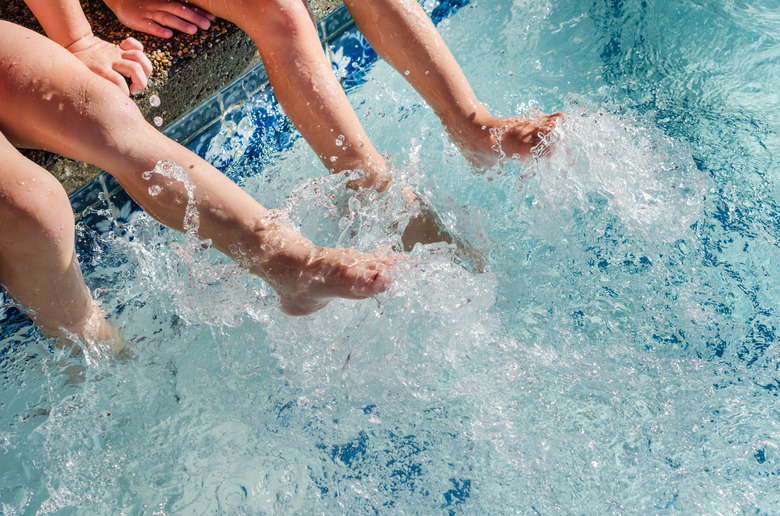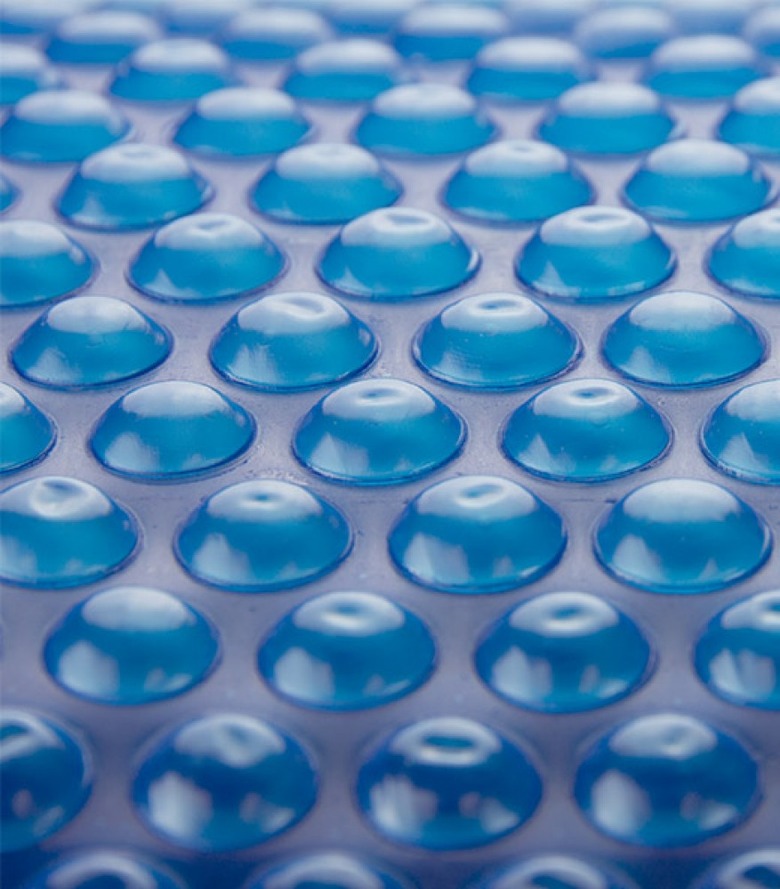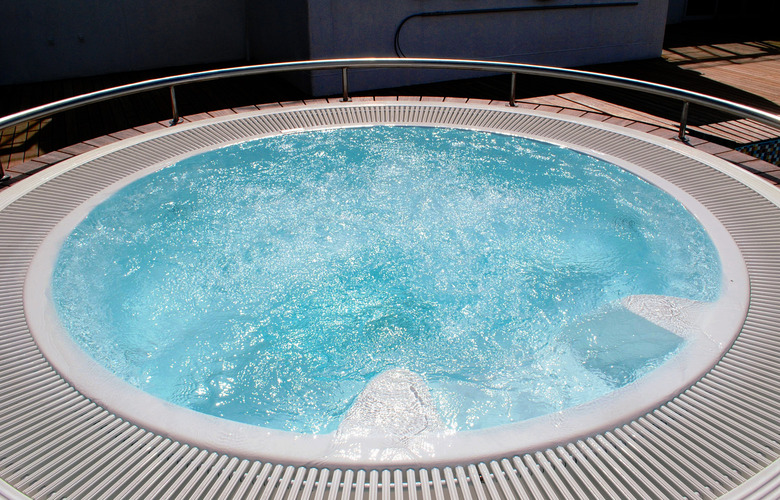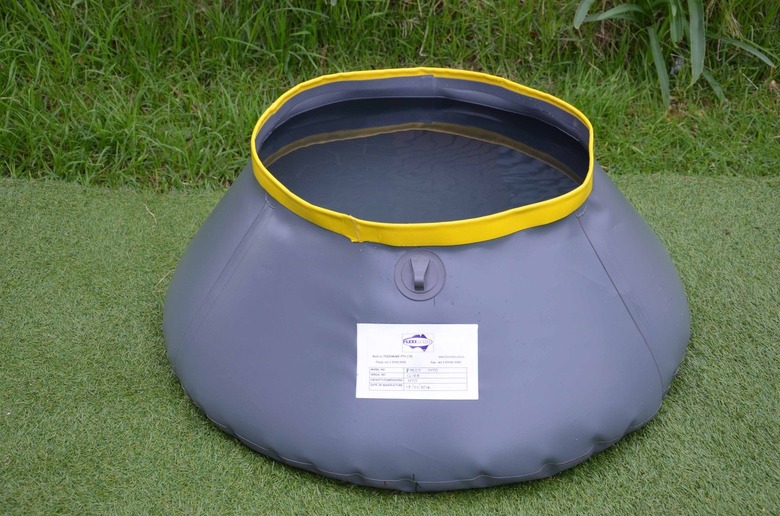Tips For Saving Pool Water
Summertime is here—time to splash in the pool! Due to drought conditions and an increasing attention to responsible water use, pool owners in certain areas need to be especially sensitive to their water usage, and so do people with spas. But even in places with plenty of water, it's still a sound idea to be a good steward of our planet's limited resources. Here are ways to do your part to conserve water.
Cover It
Cover It
Evaporation is caused by exposure to air and wind, and can also happen on cool nights when heated water turns to mist. On average, a pool loses 1 3/4 inches of water per week to evaporation. Installing a cover when the pool or spa isn't in use slows evaporation dramatically—up to 95%!—and is the best choice for minimizing water loss. It also helps keep out dirt and debris—which makes it easier to keep the water balanced—and keeps the warmth in, limiting the wear and tear on your maintenance equipment. You can go high-tech or pricy, or get an inexpensive solar blanket (also known as a thermal blanket), which resembles a piece of giant bubble paper that you toss onto the water's surface. For hot tubs, a firm, well-fitting cover is even better.
Another alternative is a liquid solar blanket, a nontoxic evaporation inhibitor in the form of a transparent liquid that you pour into the pool every 25 to 30 days. According to manufacturers, this product is about half as effective at evaporation mitigation as a solar blanket. Finally, consider installing windbreaks such as hedges or slatted fences to slow breezes on the water's surface and prevent evaporation.
Maintain the Water Properly
Maintain the Water Properly
Water usaage will be reduced if you check chemical levels regularly and maintain correct water chemistry. Keep the water circulating as recommended, too. Doing these things will allow you to keep the same spa water for four to six months, reducing the need to drain the pool for maintenance. For example, if calcium levels are too high, mineral deposits called scale may form on the plaster surfaces of a pool, requiring you to drain the pool (and waste the water) in order to clean the surfaces. Conversely, when calcium levels are too low, pool water leaches calcium out of the plaster walls of the pool, etching them.
If these types of preventable problems go on for long enough, fixing the problem will require emptying the pool—and you'll lose thousands of gallons of water in the process.
Replace the Pool’s Sand or DE Filter with a Cartridge Filter
Replace the Pool's Sand or DE Filter with a Cartridge Filter
Cleaning a cartridge filter requires nothing more than removing it from the filter tank and giving it a quick hose-down. A sand filter or DE filter, on the other hand, can only be cleaned by backwashing. While a backwash drains 250 gallons or more of water, cleaning a cartridge filter uses no more than 30 gallons.
Clean Your Filters
Clean Your Filters
Another important way to save water is to clean the cartridge filters regularly to extend the cleanliness of the water. Simply remove them once a month and hose them off to remove any trapped dirt.
Keeping the filters clean reduces the need for backwashing. Backwashing—the process of reversing the flow of pool water through the filter to clean dirt and debris from the sand or DE (diatomaceous earth) filter—discharges the dirty water out of the pool, resulting in the loss of at least 250 gallons of water during each backwashing. Each time you skip a backwashing, you save this amount of water.
Backwash your pool only when necessary. It should be required only when the pressure gauge on the filter is 8 to 10 pounds above the starting pressure. You can mark the starting pressure with a permanent marker to help you keep track. Note that certain municipalities have restrictions about where you can drain the water. And if you use ozone and/or UV light for purification, you can recycle the water by using it to water your plants.
Lower the Water Temperature
Lower the Water Temperature
Lowering the temperature of pools helps to prevent evaporation—warmer water evaporates faster. To achieve this, either turn off the heater or get a cooling pump. And lowering the temperature of a spa that isn't getting regular use makes sense on your power bill, too.
Minimize Splashing
Minimize Splashing
Battling it out with water fights and cannonballing off the diving board are both undeniably fun—but all that splashing results in water loss. In a similar vein, when you're topping off the water, make sure not to overfill the spa or pool. Overfilling the spa or pool makes it more likely to spill out.
Turn Off Water Features When No One’s in the Pool
Turn Off Water Features When No One's in the Pool
Waterfalls, slides with water running down them, and fountains all expose water to more air and sunlight, meaning it will evaporate faster. If nobody's there to enjoy these water features, turn them off.
Repair Leaks
Repair Leaks
If you've taken measure to stop evaporation but still keep losing water, inspect the pool to see if you have a leak. Mark the edge of the waterline with a water-soluble pen or some tape, then check back 24 hours later. If the water level has gone down more than 1/4 inch, chances are you have a leak.
The culprit may be pipe valves, main drains, skimmers, lighting fixtures, or return jets. If you can't locate the leak yourself, hire a leak-detection company to find it. The fix may be as easy as tightening a fitting or replacing an O-ring, or it may require a professional.
Drain Only When Necessary
Drain Only When Necessary
Properly maintained spa water only needs to be drained and refilled two or three times a year. In-ground pools, even when you close them in the winter, don't need to be drained at all, unless repairs warrant it. If you need to lower the water level to do maintenance, you can drain the water into a temporary holding tank to conserve it—provided you have the resources to do it. Pools with vinyl liners should never be drained—ever—except by a professional, because draining can ruin the liner.
Before draining water into your yard, let the pool or spa sit open for a week until the chemicals evaporate, and then drain it slowly over several days. Note that certain municipalities have restrictions about where you can dump drained water. Check with your local stormwater management or water management authorities.
Catch Rainwater
Catch Rainwater
Invest in rain barrels to capture rainwater and use it to top off your pool or spa. You can also remove the cover during storms in order to catch rain. However, be aware that rainwater can affect water chemistry.



